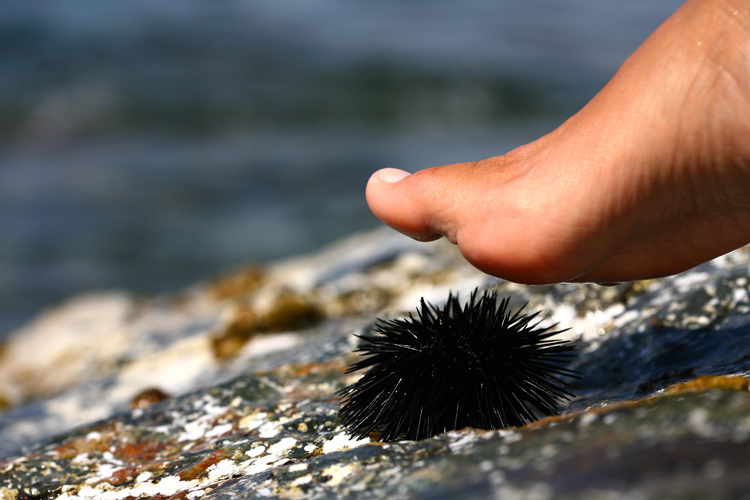Sea urchins are spherical and spiny marine animals that inhabit all five oceans of the world.
There are around 950 species of sea urchins, and they can often be found in areas above water at low tide and 16,000 feet (4,876 meters) in depth.
Sea urchins feed on algae but can also eat slow-moving or sessile creatures. Their small yet hard shells are covered with primary and secondary spines.
A sea urchin typically ranges from one to four inches (10.1 centimeters), but larger species can reach up to 14 inches (35.5 centimeters).
Even though they don't have means of propulsion, urchins move freely - between three and 20 inches (50.8 centimeters) per day - using their flexible tube feet assisted by spines.
Are sea urchins poisonous? Some species, like the flower urchin, feature venomous spines and can be deadly. This particular species is seldom found in the Pacific and Indian Oceans.
People with allergic reactions to bites or stings should take extra precautions and get medical assistance right after they are bitten or stung by these animals.
Urchins use their long, sharp spines to defend against their most common predators: lobsters, triggerfish, crabs, California sheephead, wolf eels, and sea otters.

Sea Urchins and Humans
Urchins can be found on any beach or coastal area in the world - in the tropics, temperate zones, and even polar regions.
Therefore, they're a threat to distracted beachgoers who walk along the shoreline barefoot, simply enjoying seawater.
So, whenever someone steps on a sea urchin, they will suffer puncture wounds. In addition, the injury may develop into a more or less lethal infection, depending on the species.
Unfortunately, a sea urchin sting is always painful and will damage and hurt the skin's tissue. After being stung, the injured area will swell and become inflamed.
An infection caused by a venomous sea urchin will trigger several abnormal symptoms, including dizziness, breathing problems, chest pain, heart rate changes, loss of consciousness, nausea, and vomiting.
In the worst-case scenario, the venom will enter the bloodstream and cause death. And yes, people have already lost their lives after stepping on a sea urchin sting.
So, if you have inadvertently touched or stepped on a sea urchin, you've got to treat the wound as quickly as possible.
Sea Urchin Sting Treatment
Here's what to do to remove the spines for your skin:
- Immerse the affected area for 30 to 90 minutes in hot water or vinegar to help smoothen or dissolve the spines;
- Use tweezers to remove all spines stuck in your foot, hand, or body; <li">Apply shaving cream to the injured area and remove the pedicellaria (moveable stalked structures with jaws) by scraping with a razor;
- Scrub the wound with soap and water;
- Rinse the injury with fresh water;
If you find signs of infection - redness, pus, or heat - apply a topical ointment and consult with your doctor.
Also, spines may require surgical removal if they have entered the bone tissue.
You may also relieve the pain with ibuprofen (every six hours) or acetaminophen pain relievers (every four hours).
Sea urchin stings may be avoided. Whenever exiting the ocean, look carefully around you, particularly in rocky areas, intertidal pools, near coral and reef zones, and wet sand.
